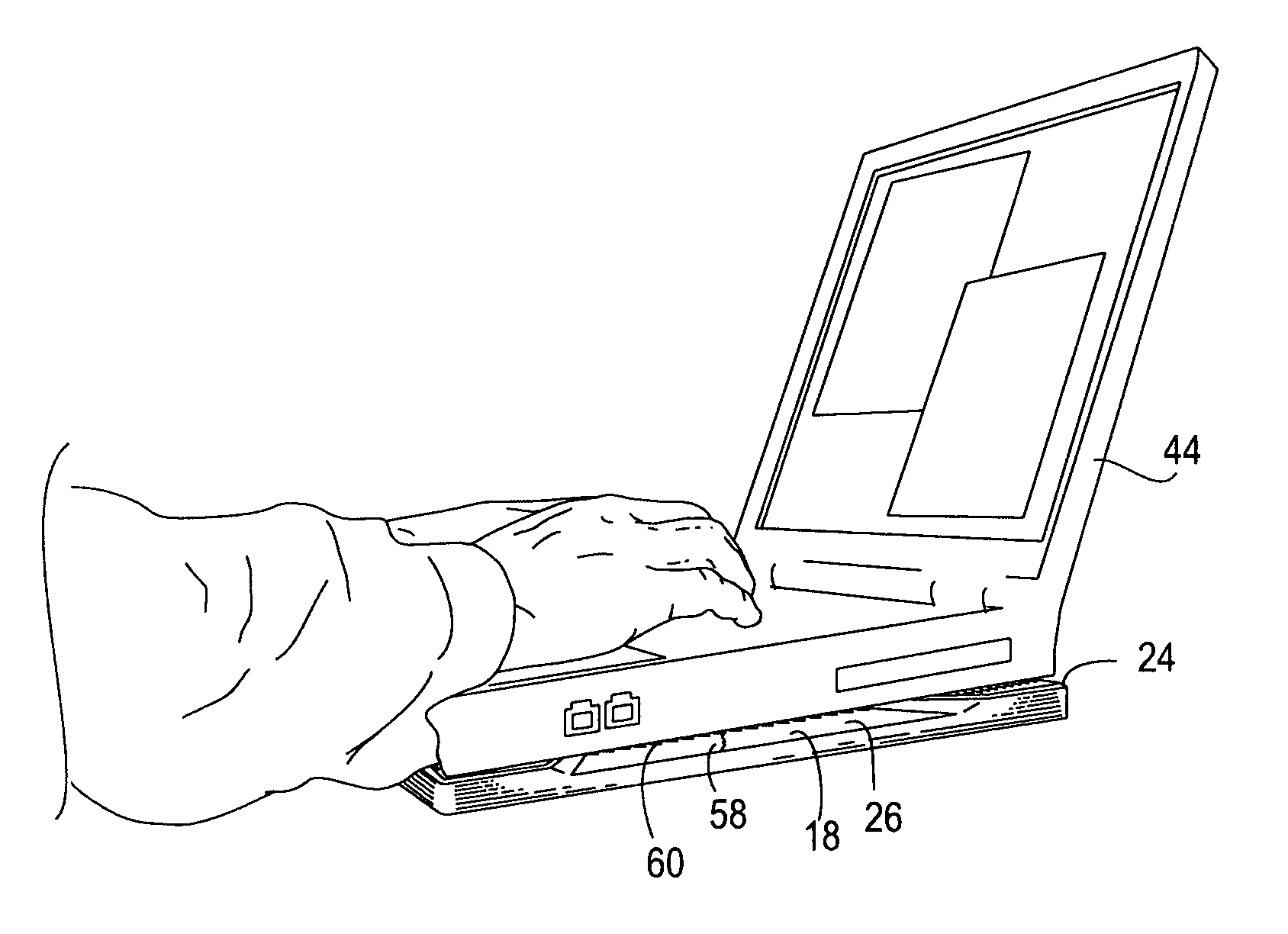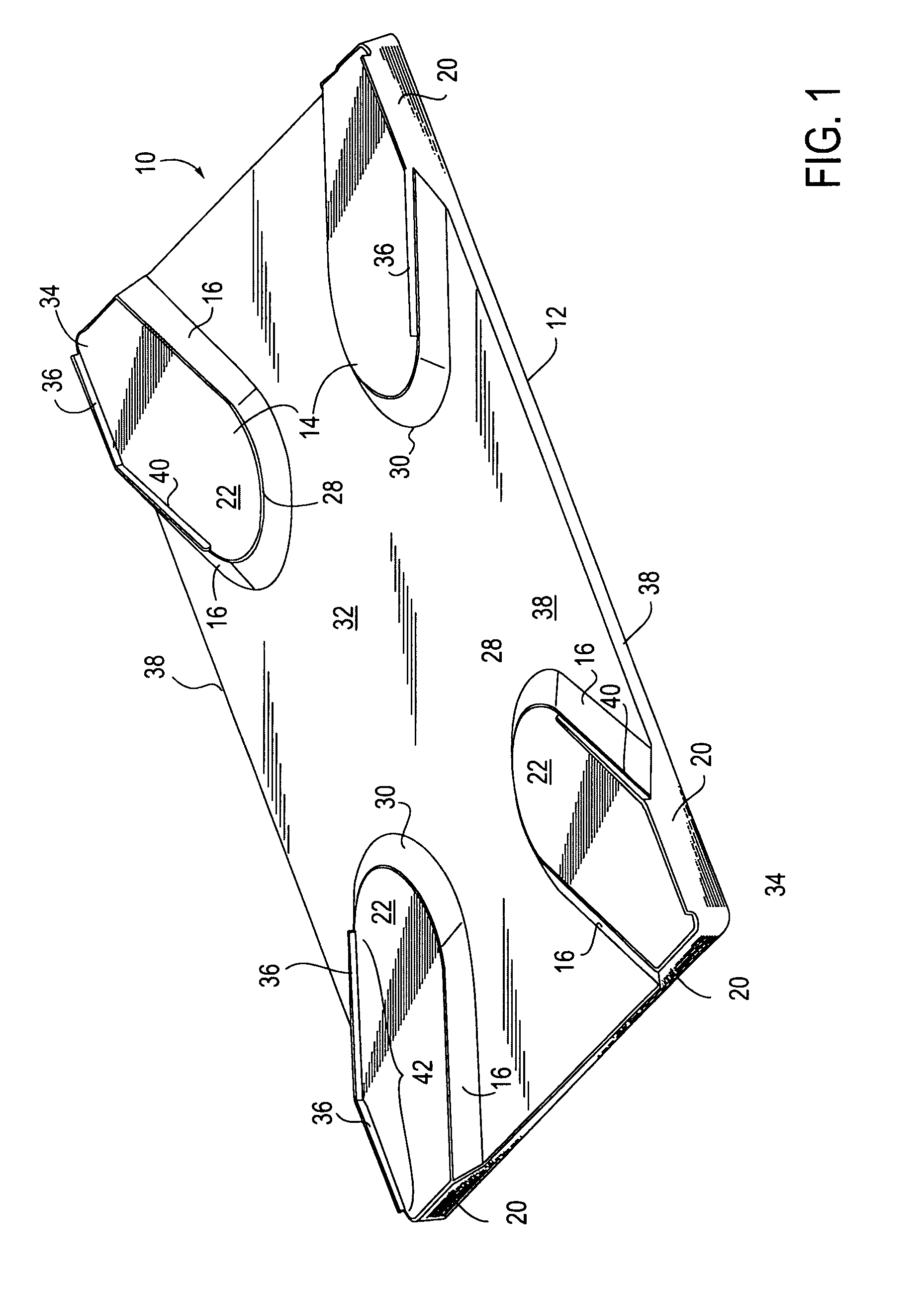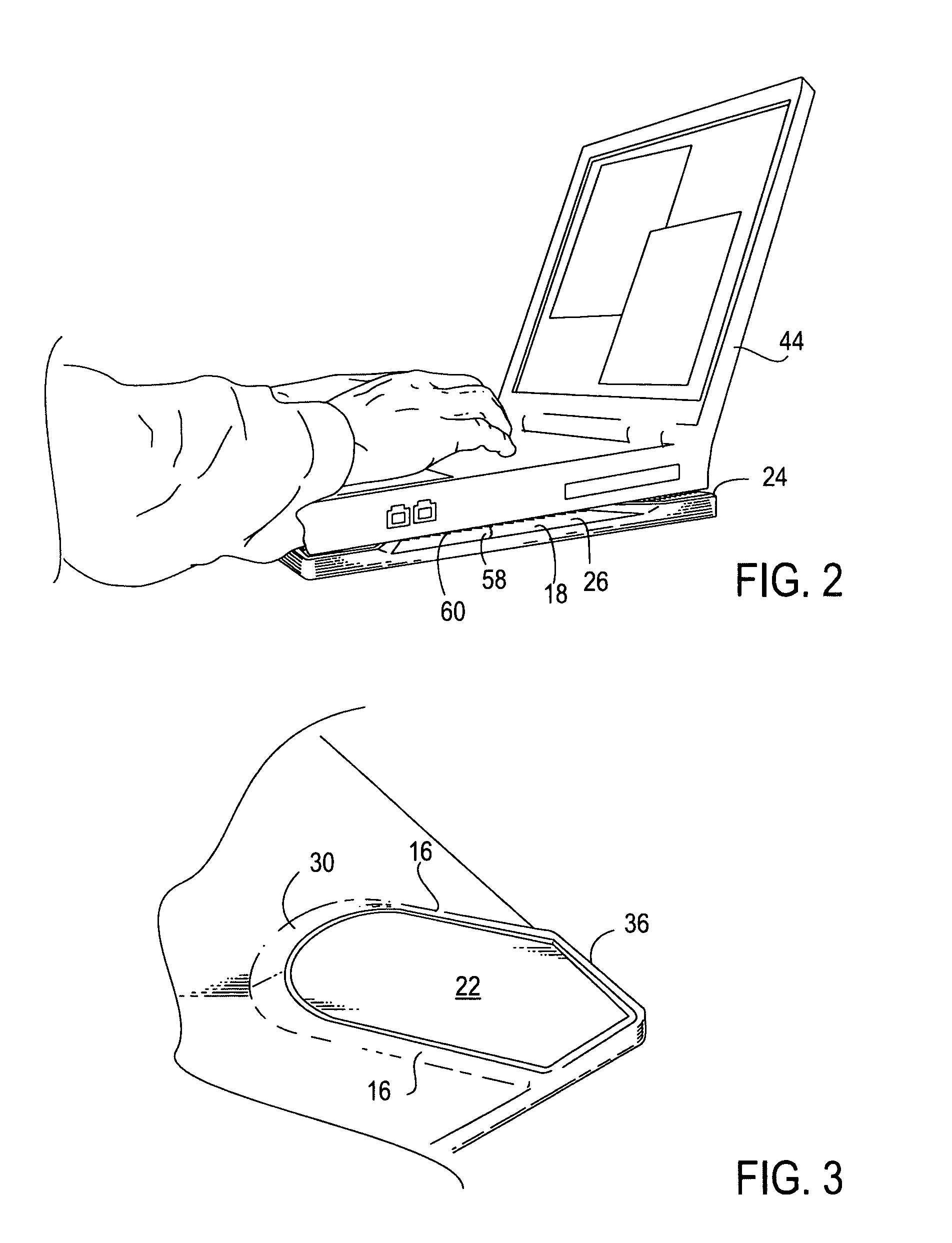Thermal insulating board for laptop computers
a technology for laptop computers and insulating boards, which is applied in the direction of machine supports, electrical equipment casings/cabinets/drawers, instruments, etc., can solve the problems of unproductive computer cooling, small and lighter laptop computers, and notoriously hot undersides of laptop computers. achieve the effect of adding rigidity and stiffness to the board, and small profil
- Summary
- Abstract
- Description
- Claims
- Application Information
AI Technical Summary
Benefits of technology
Problems solved by technology
Method used
Image
Examples
Embodiment Construction
[0018]An embodiment 10 of the heat shielding laptop board of the present invention is shown in FIGS. 1 and 2, which disclose a rigid, planar rectangular composite board having a first layer 12 with short platforms or steps, hereafter “risers”, 14 diagonally extending to each corner in an “X”-shaped configuration. The risers 14 may be hollow so as to form a cavity therebelow, or the risers may be solid throughout. Each riser 14 may include inclined sides 16 located within the interior area 18 of the first layer 12 and vertical edges 20 along the board's perimeter. The flat top surface 22 of each riser 14 may be configured to be parallel to each other riser top surface 22 defining a second horizontal plane or elevation 24 parallel to the first horizontal plane or elevation 26 of the first layer 12. Alternatively, the top surfaces 22 and / or interior surface 18 may be angled with respect to each other for a more ergonomic-friendly positioning of the laptop, or the surfaces 22 may be ori...
PUM
| Property | Measurement | Unit |
|---|---|---|
| temperatures | aaaaa | aaaaa |
| thermal insulating | aaaaa | aaaaa |
| perimeter | aaaaa | aaaaa |
Abstract
Description
Claims
Application Information
 Login to View More
Login to View More - R&D
- Intellectual Property
- Life Sciences
- Materials
- Tech Scout
- Unparalleled Data Quality
- Higher Quality Content
- 60% Fewer Hallucinations
Browse by: Latest US Patents, China's latest patents, Technical Efficacy Thesaurus, Application Domain, Technology Topic, Popular Technical Reports.
© 2025 PatSnap. All rights reserved.Legal|Privacy policy|Modern Slavery Act Transparency Statement|Sitemap|About US| Contact US: help@patsnap.com



